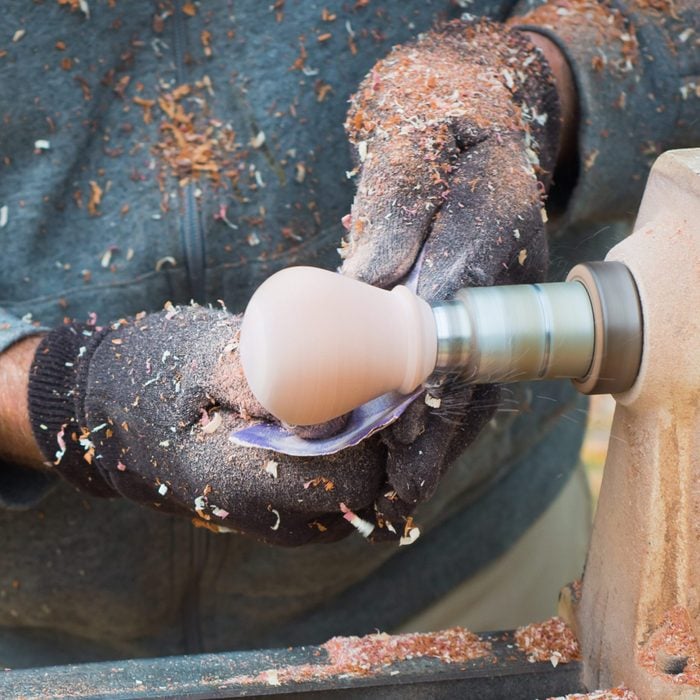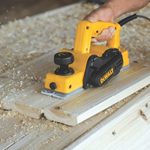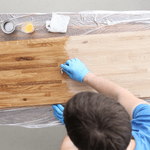Woodturning Basics: Tips for Beginners

Here are 10 tips for beginners who want to get off on the right foot with woodturning.
Jim Jacobs started woodturning more than 40 years ago in high school, but quit in short order. “I wasn’t having fun,” says Jacobs, from Hastings, Minnesota. “My teacher, lathe and tools were not that great, and guess what? My turnings were not that great.”
Bob Puetz started woodturning when he was 10. He stood on a peach crate in his dad’s shop to reach a good quality lathe. He learned from his dad, a farmer known for having lots of quality tools. “My first project with the lathe was a lamp of walnut from grandpa’s farm,” says Puetz, from East Bethel, Minnesota.
Jacobs, Puetz and Dan Larson are longtime members of the Minnesota Woodturners Association (MWA). They offer these 10 tips to beginners who want to get off on the right foot.
Take a Class
Do an online search of woodturning classes and plenty of choices will pop up. You’ll find out if you like the realities of woodturning — turning itself, the tools, the lathe, the wood, the dust — versus what you imagined.
“You won’t waste money buying tools you won’t use,” says Larson, from Little Canada, Minnesota. “You’ll discover the type of turning you like. Some people like turning bowls, and others like making spindles, which require different tools.”
Find a Community
Taking a class takes you to woodturning communities. Join one. It helps you save money on tools, lathes and wood, as well as learn techniques from fellow members. Sometimes members give away or sell at a discount tools and equipment they no longer use.
Search online to find a community. Start with the American Association of Woodturners, which has 365 worldwide chapters.
Find a Mentor
Many members of your woodturning community will gladly take you on as a student. Jacobs, Puetz and Larson are my mentors and go-to guys for answering countless questions about those devilish details of my woodturning projects.
Buy the Best Tools — But Not a Whole Set
The additional cost of an excellent tool is forgotten over its long life and excellent results. Keep that in mind that if you decide to quit woodturning.
“You can sell woodturning tools a whole lot easier than cheap tools, which are often made of cheap steel or have bad handles,” says Jacobs. “Also, don’t buy a whole set of woodturning tools. There may be eight in that set, and you end up using two or three, depending on the type of turning you do.”
Go Slow With Purchases
You can be overwhelmed by the cost of the tools, lathes, saws, sharpening equipment, shop supplies, wood, etc. You may want it all, but pump the brakes.
“For $1,000 — sometimes less — you can get set up pretty well,” says Jacobs. “There are a lot more hobbies that are a lot more expensive. This is cheaper than owning a boat. Turning has been around thousands of years, and back then turners didn’t have fancy lathes and expensive tools.”
Know Your Lathe
Read every page of the manual. Before you turn anything, learn how each part works.
“Most important, know where the off button is,” says Larson. “Also, make sure your lathe is bolted on a flat surface so there are no vibrations or wobbling when it’s running.”
Protect Yourself
Guard your lungs with a high-quality facemask and, optimally, an air-filtration system. Wear a face shield.
“When you turn, wood chips are flying all over the place, or you could hit a knot or a nail that could fly,” says Larson. “Protect your eyes and face.
“Also, save stressing your hands and arms by using your whole body. Brace the tool handle against your body and move whenever you can. This woodturning dance prevents using a death grip on your tool.”
Have a Dedicated Space for Woodturning
Puetz says some MWA members have a 4-ft. by 4-ft. basement woodturning space enclosed by plastic or shower curtains. Also, have a nearby bench and good lighting.
Puetz hangs a welding curtain in his garage and pulls it out of the way when not turning. He jokes that the best advice for setting up a shop is to talk it over with your spouse, because woodturning makes lots of dust!
Don’t Use Exotic Woods When Learning
Exotic wood is more expensive and often more difficult to turn than more common birch, box elder and soft maple. “While they are pretty, some exotic woods from Africa and South America are hard, which can frustrate beginners,” says Larson. “Hickory and honey locust are also hard woods.”
Listen to the Wood
When turning is going well, your shop is quiet except for a steady, reassuring hiss of the tool shaving wood. If you hear knocking or feel vibrations, pay attention and make changes to get back to the hiss.
“Use your senses not only for technique but also for artistic design,” says Larson. “You may have a design in mind, but you should follow the lead of the wood.
“Pay attention to what the wood wants to be. If you don’t, you may have beautiful feathering in the wood that you cut right through because it doesn’t fit your plan. And then you end up with a plain bowl. But if you notice the feathering and turn the workpiece upside down, you have a beautiful bowl.”



